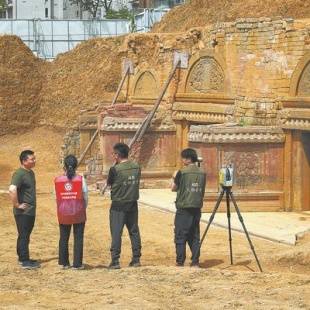On the trail of Prince Duan's tomb

"I always chatted with them. I was touched every time a warmhearted elderly man guided us through the forest and shared his memories of the place."
Xie recalls that since the 1990s, Chengdu has pioneered nationwide institutional collaboration between archaeological work and infrastructure construction projects. Archaeological surveys must be done before the beginning of construction.
He points out that problems still crop up. Once the land is already transferred to the owner, sudden archaeological findings may require on-site protection or time-consuming excavations, both of which may disrupt the infrastructure construction.
"Now, we have adopted a new model, regulating that archaeological surveys must be completed before land transfer. This can effectively balance the contradiction between infrastructure construction and cultural relics preservation," he says.
It's in accordance with the newly amended Law on Protection of Cultural Relics, which took effect on March 1.
Besides that, Chengdu has taken other proactive measures to smoothen cultural relics conservation work.
Based on the standards of the fourth national census on cultural relics, Chengdu has established a stricter and more detailed protocol for documentation of immovable cultural relics in accordance with the city's specific situation. For instance, it mandates precision in photographs and 3D laser scans, as well as the marking of pest-related problems in drawings of cultural relics.
"Chengdu protocol aims to address practical challenges that personnel encounter in their daily work, streamline data collection and information documentation, and establish a comprehensive profile of cultural relics," says Bai Yuchuan, vice-head of the operational guidance team of Chengdu's fourth national census on cultural relics.





































